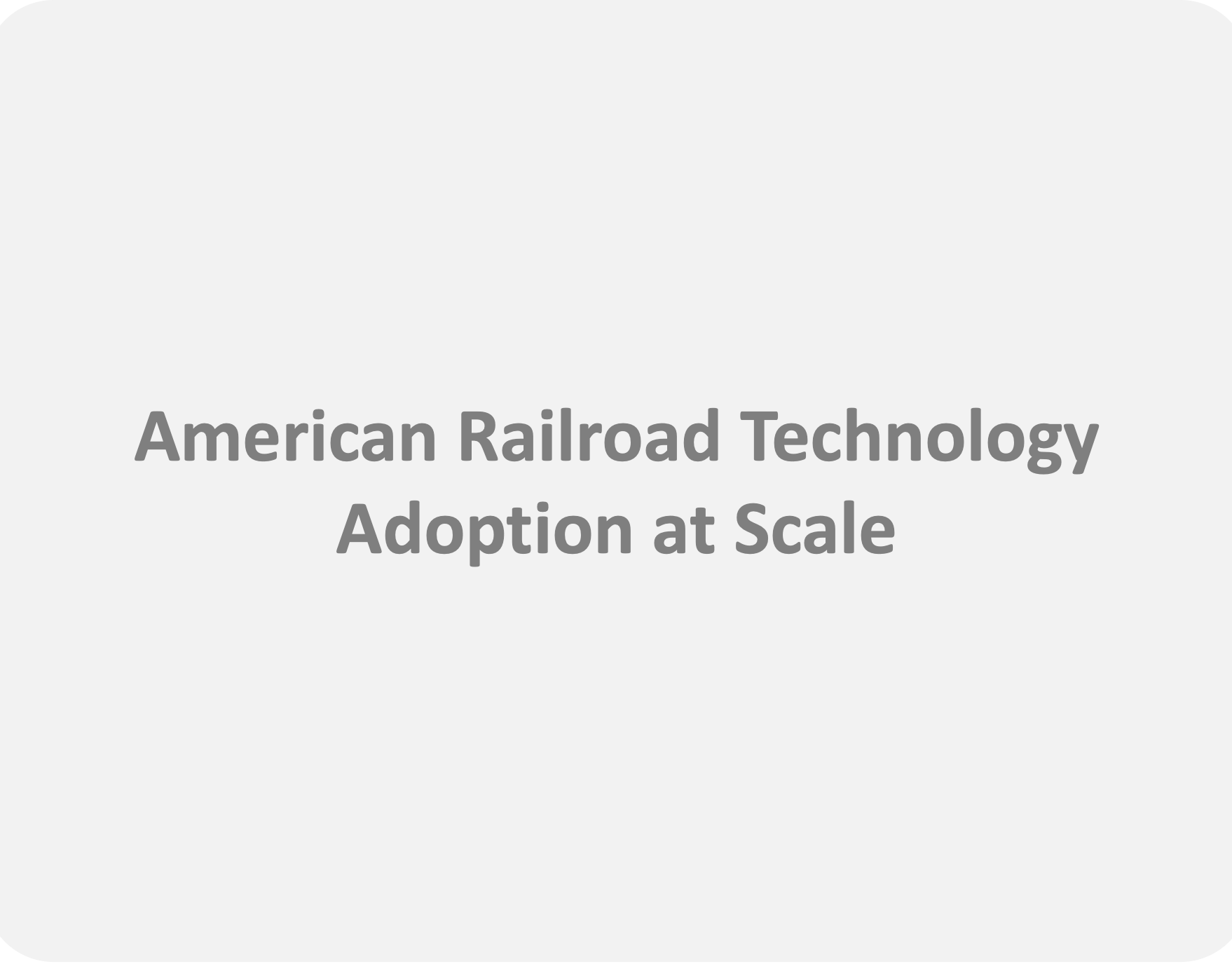Port Community System
Digital Transformation of American Maritime Supply Chain
Community System at Port of Los Angeles.
Maritime Container Freight Ecosystem is one of the diverse supply chain system with a complex network of community stakeholders like Port Authorities, Container Terminals, Customs, Drayage Community, Railroads etc. And with this multiplex comes an equal measure of complex negotiations when considering opportunities for a more efficient and effective inter-modal ecosystem, ranging from vested port operators, to deeply embedded and often resistant union labor, and even emergent disruptions.
The community system at the Port of Los Angeles is a public-private governance system that neutral and open electronic platform enabling intelligent and secure exchange of information between public and private stakeholders in order to improve the competitive position of the sea and air ports’ communities.
Why it Matters?
The maritime supply chain is not just about ships and ports, its the circulatory system of the American economy. It ensures that raw materials reach factories, consumer goods arrive on store shelves, and agricultural exports reach global markets. Disruptions in this system ripple across industries, making investment in port infrastructure and supply chain resilience a national priority.
This industry is a paradox. On one hand, it is a colossal economic engine, moving over $2.1 trillion in goods annually, contributing nearly $2.9 trillion to GDP, and supporting 21.8 million jobs nationwide with wages that are almost 20% higher than the national average. On the other hand, its day-to-day operations remain deeply outdated, often reliant on pen-and-paper documentation, fragmented data silos, and limited collaboration among stakeholders with competing interests. This disconnect between economic importance and operational maturity creates inefficiencies that ripple across the entire supply chain.
That being said, there are pockets of innovation emerging across the industry. Autonomous terminal operations at the Ports of Los Angeles and Long Beach demonstrate how automation can improve efficiency and throughput. Modern Transportation Management Systems (TMS) are powering drayage operations, offering better visibility and optimization for trucking. These examples show that technology is being adopted—but only in isolated areas. The challenge is that these systems remain siloed, unable to communicate seamlessly with one another, which limits their overall impact.
This is precisely why the industry needs a Port Community System (PCS). A PCS acts as a digital backbone, integrating disparate technologies and stakeholders into a unified platform. By enabling real-time data sharing, standardized workflows, and collaborative decision-making, PCS can bridge the gaps between terminals, carriers, truckers, regulators, and shippers. Without such integration, the maritime supply chain risks remaining “stone-aged” despite scattered technological advances. With it, the industry can finally align its operational practices with its massive economic importance, unlocking efficiency, resilience, and competitiveness for decades to come.
Problem Space
Stakeholders
Port Community Systems (PCS) create a win-win ecosystem by digitally connecting all stakeholders in port logistics, reducing delays, paperwork, and costs while improving transparency and coordination. Here's a detailed breakdown of each stakeholder’s role, needs, challenges, and PCS benefits.
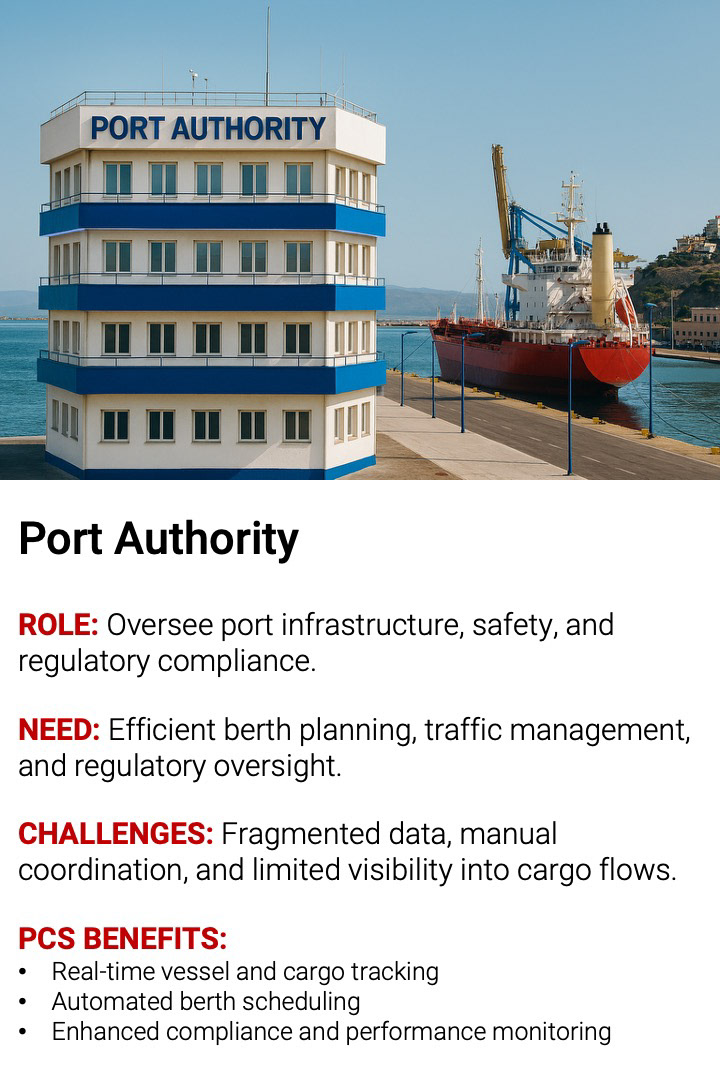
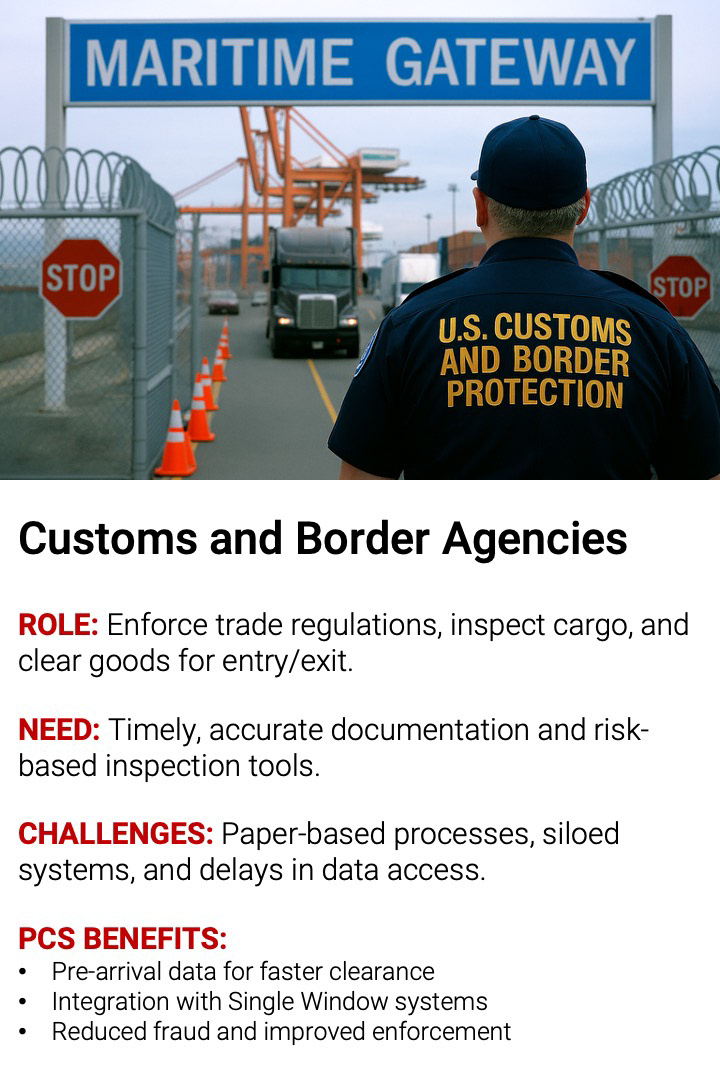
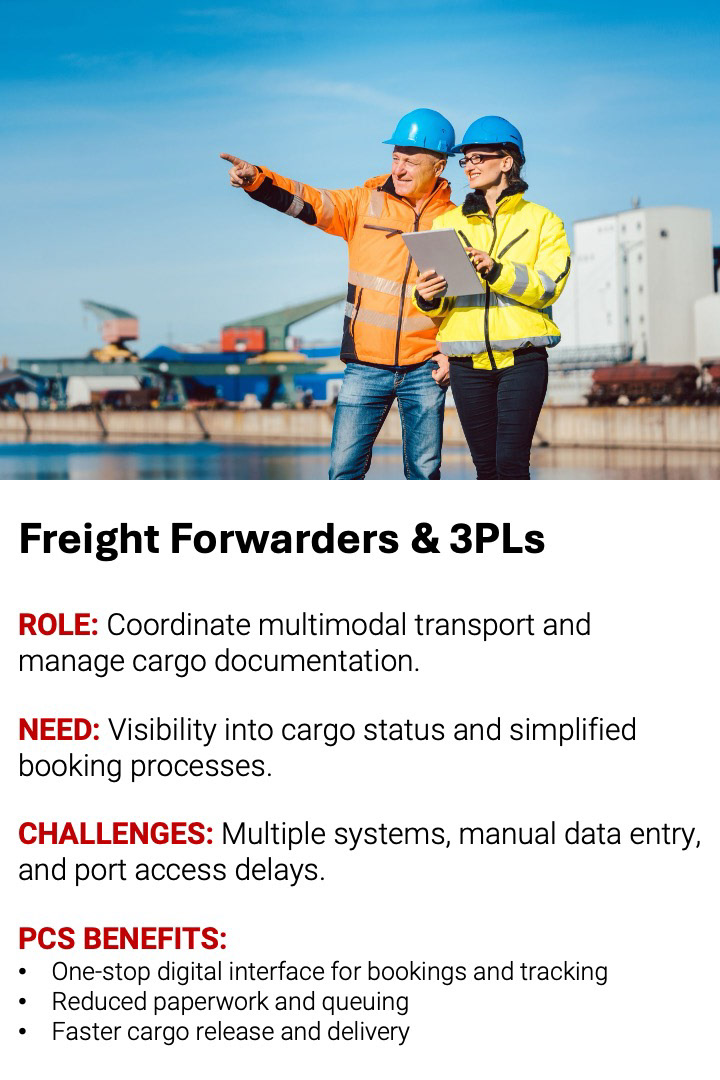
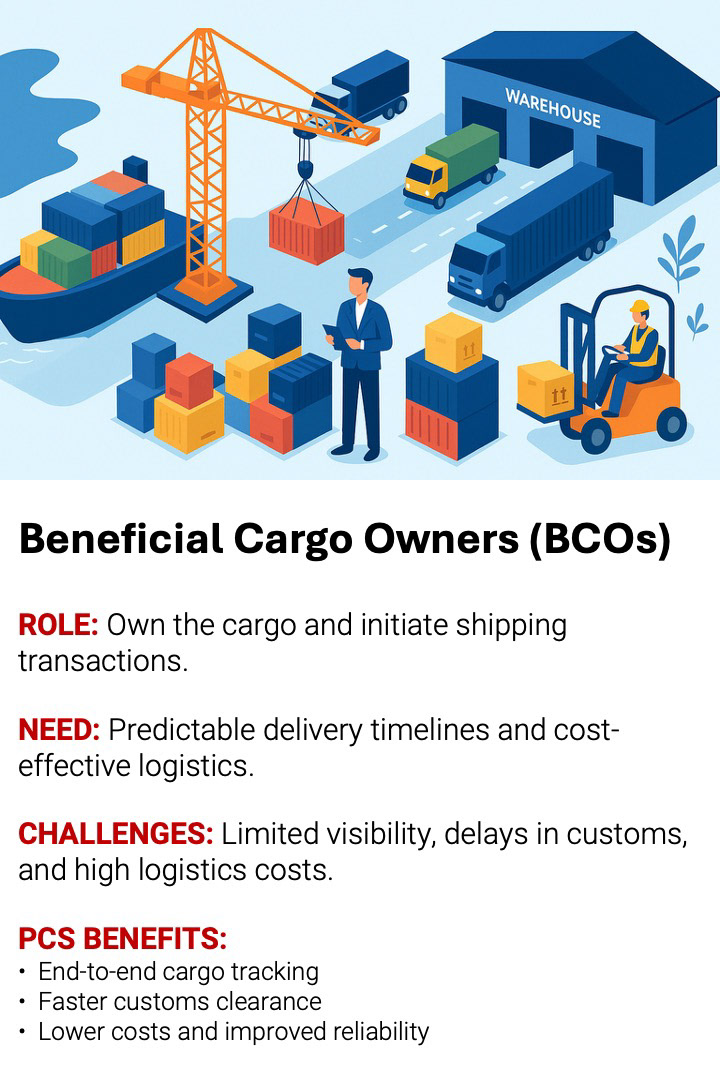
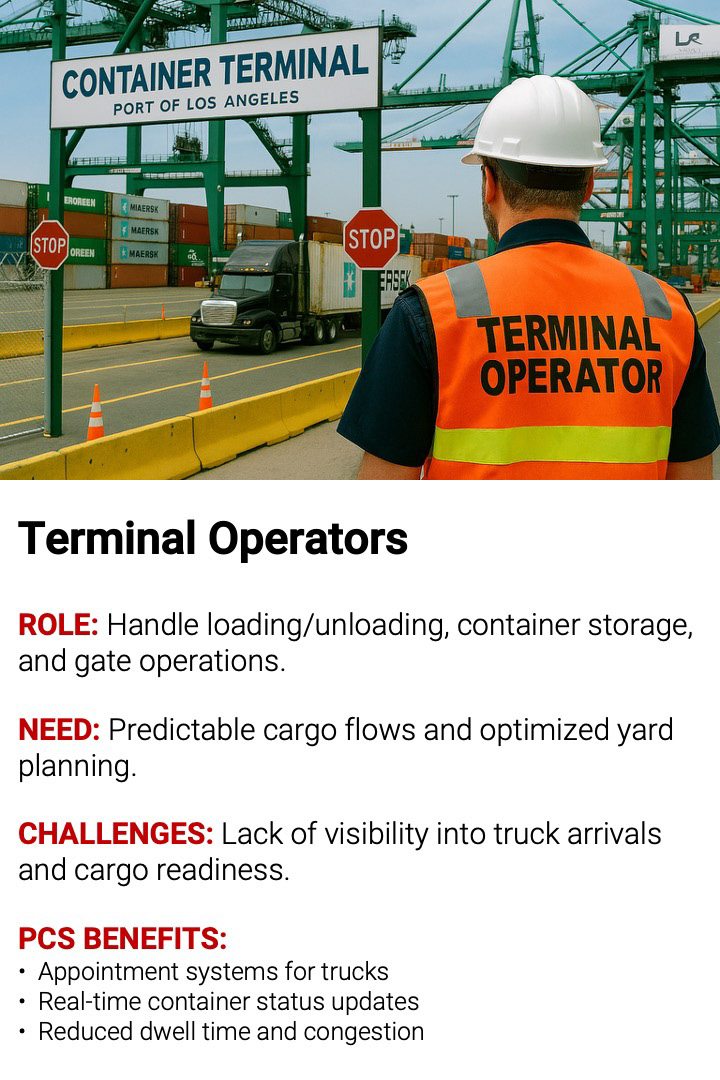
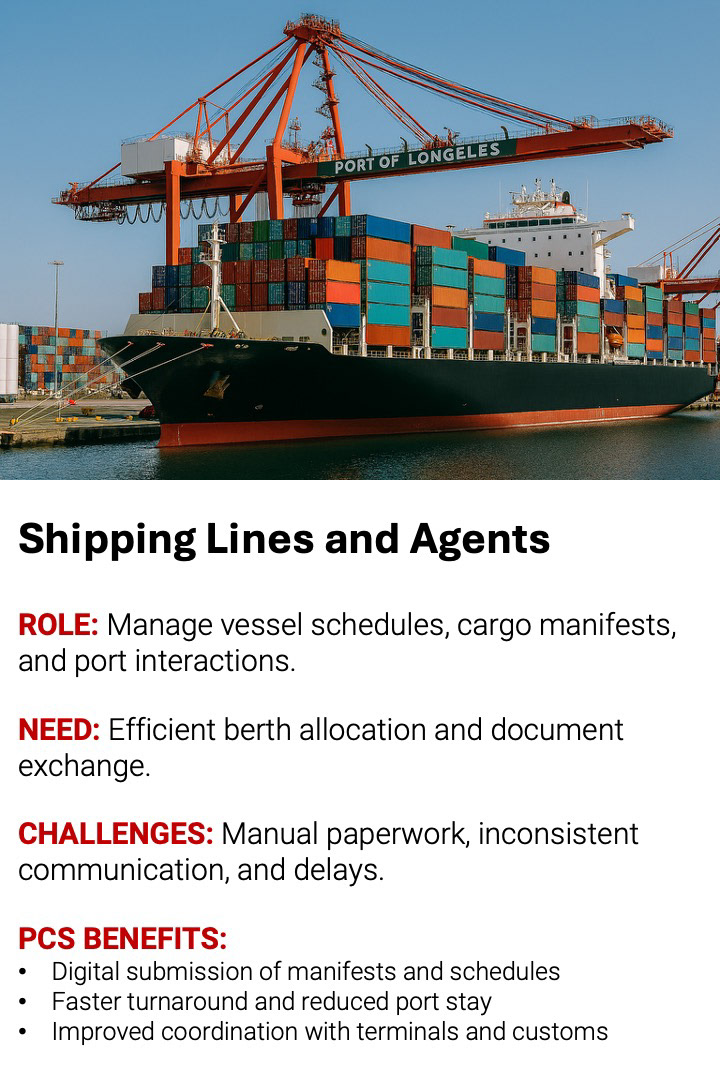

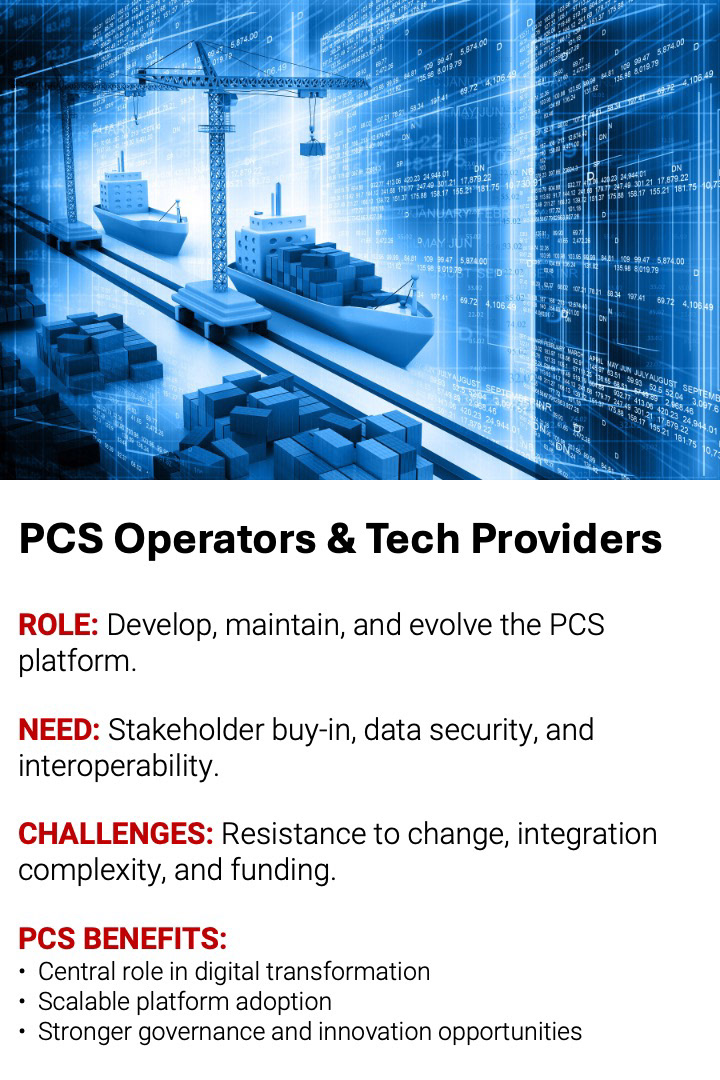
Conceptual Structure of Port Community System
A centralized digital platform that enables seamless, secure, and standardized data exchange among all stakeholders in port logistics. Its conceptual structure is built around interoperability, modular services, and stakeholder collaboration.



